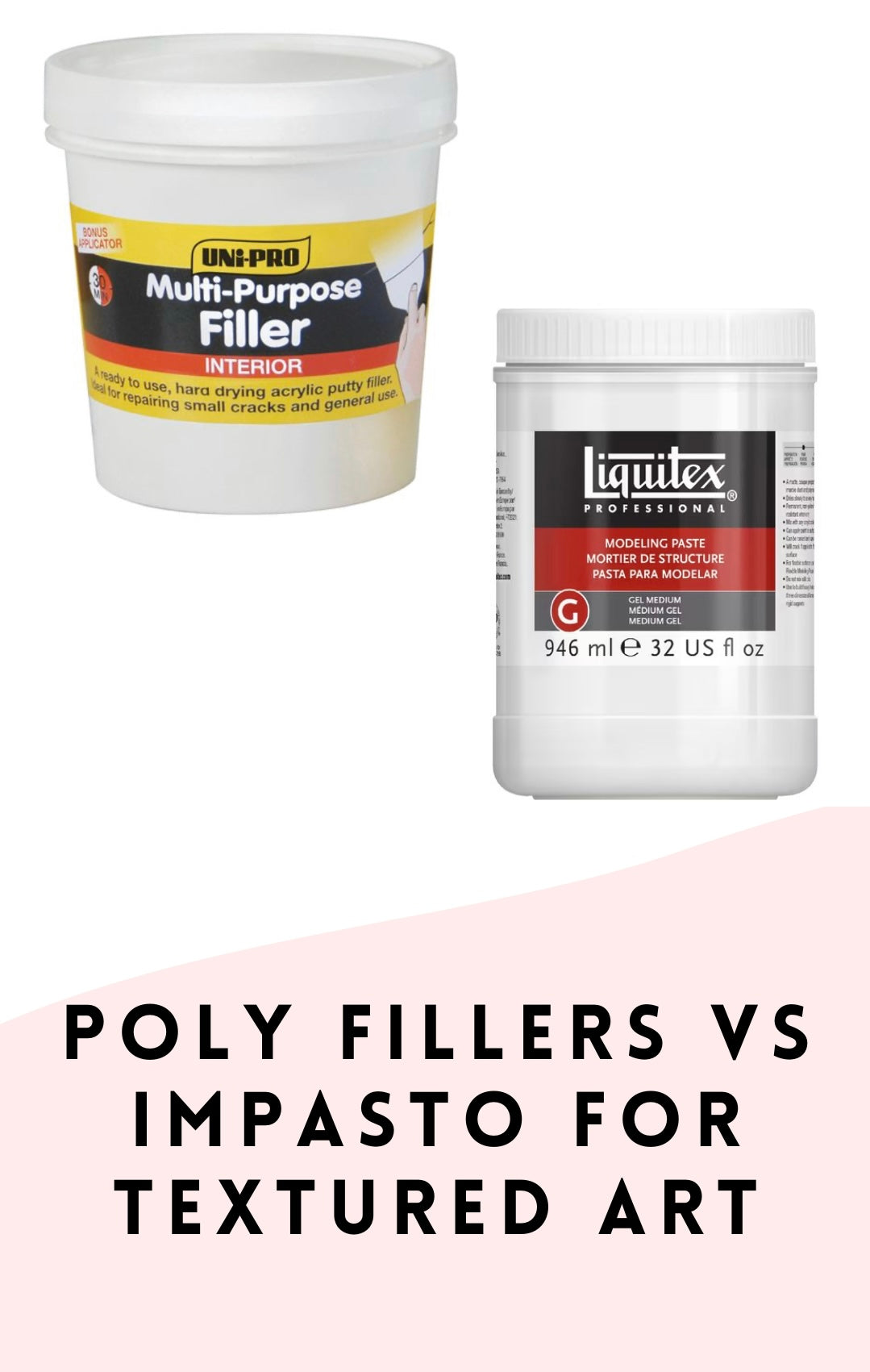
Poly Fillers VS Impasto/Modelling paste
When it comes to creating textured art, two popular materials artists often turn to are poly fillers and impasto modelling pastes. While both materials can serve the same purpose of adding texture to a painting or artwork, they each have their own unique properties, benefits, and drawbacks. Let’s discuss them!
Poly Fillers
Poly fillers, also known as spackling paste or wall filler, are typically used to repair holes and cracks in walls and other surfaces. However, many artists have discovered that they can also be used to add texture to their paintings.
Pros of Poly Fillers:
- Easy to Work With: Poly fillers are easy to use and can be applied with a palette knife in the same way that impasto pastes can. It is also an easy material to sand down and modify.
- Inexpensive: Poly fillers are a lot more inexpensive than art materials like impasto/modelling pastes.
Cons of Poly Fillers:
- Brittle: Poly fillers can be brittle and prone to cracking if applied too thickly or if the surface they are applied to is not flexible.
- Limited Flexibility: Poly fillers are not very flexible, which can limit their use in some types of artwork.
Impasto/ Modelling Pastes
Impasto modelling pastes are thick, sculptural mediums that can be mixed with acrylic paint to create texture in a painting. These are what I personally use in all of my original textured petal paintings.
Pros of Impasto Modelling Pastes:
- Flexible: Impasto modelling pastes are much more flexible than poly fillers, which makes them less likely to crack or break.
- Versatile: Impasto modelling pastes can be used to create a wide range of textures, from smooth to rough and from fine to coarse.
Cons of Impasto Modelling Pastes:
- Expensive: Impasto modelling pastes are often more expensive than poly fillers, especially the high-quality brands.
- I’m sorry but that’s all I’ve got!
If you are just starting out with textured art and looking for a budget-friendly option that is easy to practice with poly fillers may be the way to go. However, if you want a more flexible material and intend on selling your artwork/ or want more confidence that the piece will last long term- an impasto modelling paste may be the better choice.
Alternatively- To save money and make your modelling paste go further you may also choose to use a combination of BOTH filler and impasto mixed together with your paint- forming a unique textured paste of your own.
Have fun playing around with the different mediums and ratios to find out what works best for you or grab my comprehensive textured art guide here
